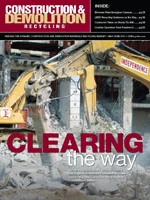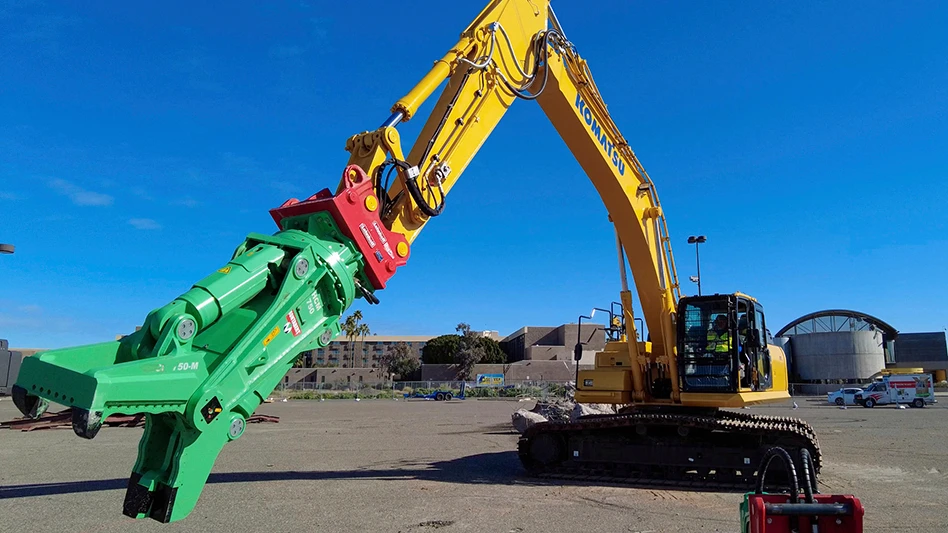The closing and consolidation of steel plants throughout the United States was a source of economic turmoil in terms of job losses and negative economic impact, particularly at the local level in traditional mill towns.
As some of these plants have been decommissioned and razed, the property on which they once operated is finding new life as land prime for new development.
 Examples of this include the 2,400-acre Keystone Industrial Port Complex, located 20 miles north of Philadelphia at what was once U.S. Steel’s Fairless Works.
Examples of this include the 2,400-acre Keystone Industrial Port Complex, located 20 miles north of Philadelphia at what was once U.S. Steel’s Fairless Works.
About 45 miles north of that, the Bethlehem Commerce Center is situated on 1,600 acres of former Bethlehem Steel property near Allentown, Pa. And another Bethlehem Steel complex on Buffalo, N.Y.’s waterfront, is being converted into a multi-use property.
NO SMALL EFFORT
Getting such sites from the point where idled plants are empty shells of their former selves to becoming prime, marketable real estate is one of the areas in which Beaver Valley Slag (BVS) excels.
One of the company’s most recent efforts involved a decommissioned tin mill in Aliquippa, Pa., near Pittsburgh. The abandoned plant was so solidly constructed that it presented a host of challenges.
BVS says it met those challenges head-on, however, by augmenting its existing fleet with new demolition and recycling tools, including some from Genesis Attachments, Superior, Wis. The move enabled BVS to keep pace despite facing some of the heartiest materials the company’s employees say they have ever seen.
In addition to being 76 acres in size, the Aliquippa site featured buildings designed for stoutness. According to Chuck Betters, Beaver Valley Slag’s president and CEO, the project started with asbestos abatement, followed by an initial demolition of the above-ground structures. It was during that phase, he says, that the project’s scope really became apparent.
“Because of the tin mill’s design, a good portion of the facility was below grade—some as much as three stories,” he says. “That, in itself, made for a challenging project. [Also], much of the concrete was better than 60 inches thick in many spots, and all of it was double-matted rebar.”
ADDING TO THE ARSENAL
BVS initially planned to rely solely on excavators fitted with hammers and buckets to tackle the plant demolition, a decision based upon past experience and prior practice.
When personnel on site developed a better understanding of what they were facing—more than 1 million cubic yards of heavily-reinforced concrete—they began to look into alternatives.
A call to equipment supplier Gibson Machinery LLC (www.gibsonmachinery.com, with locations in Cleveland and Pittsburgh), led to the purchase of a Genesis Model LXP 400 Logix Processor and a Genesis Rebar Shear (GRS).
The pulverizer jaw used at the tin mill project is designed with a tooth profile intended to maximize crushing force and a bolt-on tooth bed (essentially a fully-replaceable crushing surface) designed to eliminate the need for welding.
“We only took delivery of the LXP in July 2010 [and] it’s been outstanding for us at Aliquippa,” says Betters. “Our guys say it’s been virtually unstoppable.”
The demolition process at the Aliquippa tin mill developed into a repeatable process that BVS describes this way: the LXP 400 (mounted on a new Hyundai 450 LC-7A) would reach into the area to be processed, grab a jaw full of concrete and make its bite, pulverizing the concrete and freeing up the mats of rebar contained within. The uptick in production was immediate after the tool was added, says Betters.
“Because they’d never run anything like an LXP, there was a slight learning curve for our operators,” he says. “Once they had their comfort level, however, they found there was almost nothing they couldn’t do with it. They would crush the concrete, expose the bar—cutting it, if necessary, using the LXP’s shear blade—set the rebar off to one side and continue along. It was amazing to see how much more productive we’d become.”
After a particular section of the structure was completed, a BVS crew would come in with either a bucket or magnet to pull the ferrous material from that location and set it off to one side for separation by type and grade.
“A lot of ferrous is left behind after concrete has been crushed,” says Betters. “That can include anything from rebar to plate steel to rail to wire and more. Obviously we wanted to recover as much as possible. The rebar, which was the bulk of what we were getting out of here, was then piled for subsequent downsizing using the Genesis Rebar Shear.”
The Rebar Shear, says Betters, “spent the whole day biting into a pile of rebar, getting it down to size.” C&DR
In addition to its new specialty tools, BVS also had a number of hammers onsite, pounding away at concrete that was too large for pulverizing, and a pair of Caterpillar 385 and 375 excavators that pulled up huge concrete slabs that ran beneath the site.
While all the ferrous metal was being recycled, virtually all of the million-plus yards of concrete were size-reduced with the LXP and placed back into the ground to help ensure there are no below-grade voids following the demolition.
“There’s no doubt that the LXP has been the go-to tool at this site and I definitely see it playing an important role in our demolition efforts from here on in,” says Betters. “In the past, we’ve lacked the ability to reach down into a pit or reach over a wall to crack or crush concrete. We have that now and are a better demolition firm because of it.”
Betters adds that the company expects to have the tin mill project wrapped up by the end of 2011—a timeline that at one point seemed unrealistic.
“When we are done, we will leave behind a clean, level property that is ready for new development,” he says. “And this site can be particularly attractive to an investor or company since it already has barge and highway access and a rail spur. BVS’s efforts help get rid of an existing eyesore, eliminated the hazardous site conditions and took a major step in helping bring jobs back to the area by getting the property ready for development. Who can argue with that?”

Explore the May 2011 Issue
Check out more from this issue and find your next story to read.
Latest from Construction & Demolition Recycling
- Cielo investor requests annual meeting
- CDE sets up washing plant on Long Island, NY
- NWRA: NIOSH cuts a step in the wrong direction
- Ferrous price hikes could be poised to pause
- Northstar secures 15-year lease extension for asphalt shingle recycling facility
- Greenwave asks for SEC filing extension
- Construction Plastics Initiative lines up projects
- ShearCore adds dealership group in Canada







